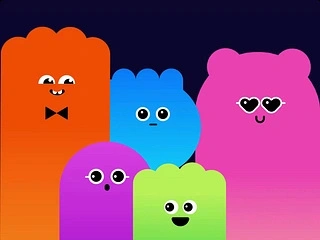The Color Game is an innovative and interactive platform designed to enhance color recognition, creativity, and cognitive skills through engaging gameplay. This game is not just an entertaining pastime; it serves as an educational tool suitable for all ages, from young children learning their first colors to adults seeking to refine their color perception and artistic abilities. In this comprehensive description, we will delve into the various aspects of the Color Game, including its objectives, gameplay mechanics, educational benefits, design elements, and the broader implications of color recognition in daily life.Objectives of the Color Game
The primary objectives of the Color Game are:
Color Recognition: Players will learn to identify and differentiate between various colors and shades, enhancing their visual perception.
Creativity Development: The game encourages players to express their creativity by combining colors, creating patterns, and designing visually appealing compositions.
Cognitive Skill Enhancement: Engaging with colors and making quick decisions fosters critical thinking and problem-solving skills.
Emotional Expression: Colors evoke emotions, and the game provides a platform for players to explore their feelings through color choices.
Social Interaction: Multiplayer modes promote teamwork and communication, allowing players to collaborate and compete in a fun environment.
Gameplay Mechanics
Game Modes
The Color Game features several modes to cater to different preferences and skill levels:
Single Player Mode: Players can embark on a solo journey, completing levels that progressively increase in difficulty. This mode is ideal for individual practice and skill enhancement.Multiplayer Mode: Players can compete against friends or other online users in real-time challenges. This mode fosters a sense of community and encourages social interaction.
Creative Mode: In this mode, players can freely explore their creativity by mixing colors, creating unique designs, and sharing their creations with others.
Level Structure
The game is structured into multiple levels, each designed to challenge players in different ways:
Basic Levels: These levels introduce players to primary colors and simple color combinations. Players will learn to recognize and name colors through interactive quizzes and challenges.
Intermediate Levels: As players progress, they encounter more complex color schemes, including secondary and tertiary colors. Challenges may involve matching colors, identifying shades, or completing patterns.
Advanced Levels: The most challenging levels require players to think critically about color theory, such as complementary colors, analogous colors, and color harmony. Players may face time constraints or specific design challenges that test their skills.
Scoring System
The Color Game employs a dynamic scoring system that rewards players for accuracy, speed, and creativity:
Points for Accuracy: Players earn points for correctly identifying colors or completing challenges. The more accurate the response, the higher the score.
Bonus Points for Speed: Quick responses yield bonus points, encouraging players to think fast and make decisions under pressure.
Creativity Points: In creative mode, players can receive points based on the uniqueness and aesthetic appeal of their designs, as voted on by peers.
Feedback and Progress Tracking
The game provides immediate feedback to players, allowing them to learn from their mistakes and improve over time. A progress tracking system enables players to monitor their development, showcasing achievements and milestones reached throughout their journey.
Educational Benefits
Cognitive Development
Engaging with the Color Game promotes cognitive development in several ways:
Enhanced Memory: Players must remember color names, shades, and combinations, strengthening their memory skills.
Problem-Solving Skills: The game encourages critical thinking as players navigate challenges and make decisions based on color theory.
Focus and Concentration: Players learn to concentrate on tasks, improving their attention span and ability to focus on details.
Emotional Intelligence
Colors are closely linked to emotions, and the Color Game allows players to explore their feelings through color choices. By associating specific colors with emotions, players can develop greater emotional intelligence and self-awareness.Artistic Skills
The Color Game fosters artistic skills by encouraging players to experiment with color combinations and design principles. Players learn about color harmony, contrast, and composition, which are essential elements in various artistic disciplines.
Design Elements
Visual Aesthetics
The Color Game features vibrant and visually appealing graphics that captivate players' attention. The use of bold colors, engaging animations, and intuitive interfaces enhances the overall user experience.
User Interface
The user interface is designed to be user-friendly and accessible for all ages. Simple navigation, clear instructions, and responsive controls ensure that players can easily engage with the game without frustration.
Sound Design
Complementing the visual elements, the sound design of the Color Game includes upbeat music and engaging sound effects that enhance the immersive experience. The audio feedback reinforces positive actions and achievements, making gameplay more rewarding.















